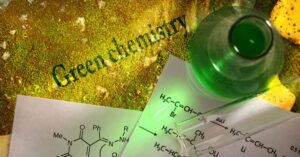The realm of process safety has always been a significant concern within the industrial sector. This has given rise to various technological solutions aimed at improving safety measures and the overall work environment. One particularly compelling revolution in this context has been the rise of nanotechnology. Nanotechnology operates at an incredibly tiny scale, enabling adjustments at the molecular level that can provide significant enhancements to safety measures.
In an increasingly complex industrial environment, the importance of such an advancement cannot be overstated. Not only does nanotechnology offer potential improvements to existing safety systems, but it also presents entirely new ways to monitor and manage risk.
The introduction of nanotechnology into the sphere of process safety is an ongoing revolution. While it may not be as highly publicized or immediately noticeable as some other technological advances, the potential impact of nanotechnology on process safety is vast and significant.
Understanding Nanotechnology
Nanotechnology, at its core, involves the manipulation of materials on an atomic or molecular scale. This typically focuses on substances with dimensions less than 100 nanometers. Over recent years, nanotechnology has seen rapid development, finding application across a diverse range of sectors, from healthcare and energy production to safety measures.
The unique aspect of nanotechnology lies in its precision. The ability to manipulate matter at such a microscopic scale opens a world of possibilities, allowing for unparalleled functionality and precision in the technological devices it can produce.
Nanotechnology is poised to reshape many aspects of our lives, and its impact on process safety is an area of particular interest. By providing the ability to monitor, manage, and respond to risks at a molecular level, nanotechnology presents unique solutions to some of the most significant safety challenges faced by industries today.
Nanotechnology in Process Safety
The marriage of nanotechnology and process safety has birthed new frontiers in industrial safety measures. The unique properties of nanotechnology allow for a more precise and proactive approach to managing safety in an industrial environment.
For instance, nanotechnology can be used to develop smart protective clothing that offers greater protection against chemical and physical hazards. Unlike traditional protective clothing, these smart garments can monitor the environment and the wearer’s condition, providing real-time feedback and improving safety outcomes.
Nanotechnology also finds application in the development of nanosensors for improved hazard detection. These sensors can monitor a work environment for potential risks, such as gas leaks or structural failures, with a level of precision and speed not achievable with traditional technologies. The ability to rapidly detect and respond to these hazards can dramatically improve process safety outcomes.
Smart Protective Clothing
The use of smart protective clothing in industries, enhanced by nanotechnology, represents a significant advancement in process safety. This innovative approach combines the protective nature of industrial clothing with the precision and functionality of nanotechnology.
Specifically, nanotechnology can be used to design clothes that provide superior protection against chemical and physical hazards. They can be engineered to resist harmful substances, extreme temperatures, or high-impact forces. Moreover, these materials can also adapt to changes in the environment or the wearer’s condition, providing optimal protection at all times.
Furthermore, smart protective clothing can also feature embedded nanosensors that monitor the environment and the wearer’s condition. This can include tracking harmful radiation levels, detecting the presence of toxic gases, or monitoring the wearer’s vital signs. By providing real-time feedback, these clothing pieces can enable timely interventions, thereby enhancing safety outcomes.
Nanosensors for Hazard Detection
Nanosensors, another key application of nanotechnology in process safety, are capable of detecting potential hazards with exceptional sensitivity and speed. These sensors function at a nanoscale level, allowing them to identify minute changes in the environment that may indicate a potential risk.
The primary advantage of nanosensors lies in their precision. Traditional sensors may not detect small changes or leaks until they reach a certain threshold. In contrast, nanosensors can detect even minute variations, allowing for early detection and response. This can be particularly useful in detecting gas leaks, structural anomalies, or changes in radiation levels.
Moreover, nanosensors can be incorporated into a variety of equipment and devices, providing comprehensive monitoring capabilities. They can be embedded in protective clothing, incorporated into machinery, or distributed across a facility, providing a holistic overview of the environment and its potential risks.
Nano-enhanced Barriers and Filtration Systems
Nanotechnology has also enabled the development of enhanced barriers and filtration systems, which play a pivotal role in process safety. By manipulating materials at the atomic level, scientists can create barriers that exhibit superior resistance against physical and chemical threats.
Nano-enhanced barriers can be used to protect sensitive equipment or isolate hazardous substances. These barriers are typically more resilient and durable than their non-nano counterparts, thanks to the precise control over their material properties that nanotechnology allows.
Likewise, nanotechnology can also improve filtration systems. Nano-enhanced filters can capture and neutralize harmful substances more effectively than traditional filters, offering better protection against airborne or waterborne hazards. These filtration systems can be especially useful in industries where workers are exposed to harmful substances or where environmental contamination is a significant concern.
Challenges in Adopting Nanotechnology
While the benefits of nanotechnology for process safety are evident, several challenges persist in its wide-scale adoption. First, the field of nanotechnology is relatively new and rapidly evolving, which can make it difficult for industries to keep pace with the latest developments.
Secondly, the cost of implementing nanotechnology solutions can be high, particularly for smaller businesses or industries in developing regions. This can include the costs of purchasing new equipment, training staff, or maintaining nano-enhanced systems.
Lastly, as with any new technology, there are uncertainties about potential unintended consequences of nanotechnology. This includes questions about the long-term effects of exposure to nanomaterials on human health and the environment. Comprehensive research and testing are essential to address these concerns and ensure the safe and responsible use of nanotechnology.
Nanotechnology and Regulations
With the rise of nanotechnology in process safety, regulatory bodies are faced with the challenge of developing and enforcing appropriate standards and regulations. This is a complex task, given the unique properties of nanomaterials and the wide range of their potential applications.
One of the main regulatory challenges is the classification of nanomaterials. Given their unique properties, traditional classification systems may not be applicable or adequate. This creates uncertainties for businesses, regulators, and consumers alike.
Moreover, regulatory bodies also need to ensure that nanotechnology applications are safe for both workers and the environment. This can require new testing protocols, safety guidelines, and monitoring systems, which can take significant time and resources to develop.
The Future of Nanotechnology in Process Safety
Looking ahead, the role of nanotechnology in process safety is set to grow. As research continues and the technology matures, we can expect to see more innovative applications, from enhanced protective equipment to smart sensors and advanced barriers.
The widespread adoption of nanotechnology will require ongoing collaboration between researchers, industries, and regulatory bodies. Continued research will be essential in expanding our understanding of nanomaterials, developing new applications, and addressing potential risks.
In addition, fostering a culture of safety and responsibility will be key. As with any technology, the benefits of nanotechnology can only be realized when it is used responsibly. This includes proper training for workers, adherence to safety guidelines, and a commitment to continuous learning and improvement.
Conclusion
As we have seen, nanotechnology holds significant promise for enhancing process safety. Its unique properties enable innovative solutions that can protect workers, prevent accidents, and improve overall process efficiency.
However, the adoption of nanotechnology is not without its challenges. It requires investment, ongoing research, and collaboration between various stakeholders. There are also important regulatory and safety considerations that need to be addressed to ensure its responsible use.
Nonetheless, as we move forward, nanotechnology stands as a silent revolution in process safety, offering powerful tools to help industries protect their workers and the environment. The journey ahead may be complex, but the potential benefits make it an exciting area of innovation to watch. With careful navigation, the world of nanotechnology can lead us to a safer and more sustainable future.




